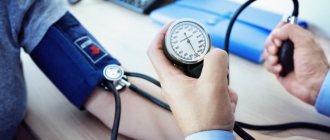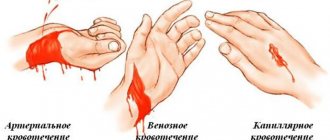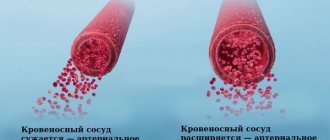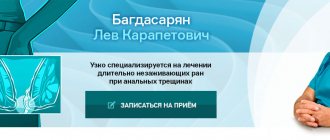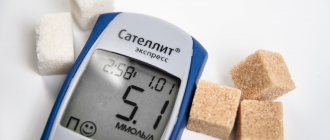Emergency care for hypertensive crisis
Category: Prevention.
Hypertensive crisis is a dangerous complication of arterial hypertension that requires emergency care. Every person suffering from hypertension must remember that this hypertensive crisis can occur at almost any time, and it does not matter whether the patient is in stage I or stage III of the disease. Therefore, not only all hypertensive patients, but also their loved ones should know how to provide first aid in case of a sharp increase in blood pressure.
There are many reasons for the development of a hypertensive crisis. Most often this condition occurs for the following reasons
- self-cessation of antihypertensive drugs or their irregular use, emotional stress
- changes in weather, especially changes in atmospheric pressure
- overwork, alcohol abuse
- overeating, large meals
- excessive physical activity;
- disturbances in the functioning of the blood pressure regulation center in the brain caused by various reasons.
Some patients mistakenly believe that quickly lowering blood pressure to normal levels will help quickly get rid of the symptoms accompanying a hypertensive crisis. Under no circumstances should you sharply reduce blood pressure; this can lead to collapse, accompanied by loss of consciousness. In severe cases, this can lead to the development of ischemic changes in the brain and other organs as a result of depletion of blood flow. It is believed that blood pressure should be reduced gradually, by no more than 20-30 mm. rt. Art. at one o'clock. If signs of a hypertensive crisis appear in a patient for the first time, then it is necessary to immediately consult a doctor or call an ambulance.
The attending cardiologist teaches his patients suffering from arterial hypertension what to do during a hypertensive crisis. Many patients are able to cope with this condition on their own and do not seek medical help. But sometimes a hypertensive crisis can be the first manifestation of hypertension, the existence of which a person might not have known before.
What to do for emergency care during a hypertensive crisis
- First of all, it is necessary to calm the patient. Panic is a bad ally in any emergency, and in this situation, anxiety will contribute to an even greater increase in pressure.
- You can take Corvalol, tincture of valerian or motherwort.
- It is necessary to restore breathing. To do this, you need to take several deep breaths and exhalations.
- You also need to ensure a flow of fresh air into the room where the patient is located by opening a window or vent.
- It is advisable to put the patient to bed, giving him a semi-sitting position with the help of pillows, to warm him up and ensure peace.
- You need to apply an ice pack or a cold compress to your head, and put mustard plasters on your calves or the back of your head, or apply warm heating pads to your feet and legs (for 15-20 minutes).
- It is necessary to take an extraordinary dose of blood pressure medication prescribed by your doctor.
- If chest pain and shortness of breath occur, take 1 tablet of nitroglycerin and call an ambulance.
- While waiting for the doctor to arrive, you can, if necessary, take 2 more tablets at 5-minute intervals. You cannot take more than 3 tablets of nitroglycerin. For people suffering from arterial hypertension, doctors recommend that they always keep on hand antihypertensive drugs such as captopril (Capoten) or (nifedipine Corinfar, Cordaflex). It is better to discuss the use of these drugs during a hypertensive crisis with your doctor at a scheduled appointment. If signs of a hypertensive crisis appear, you can take ½ tablet of captopril (meaning a dosage of 25 mg) or 10 mg of nifedipine sublingually (under the tongue). If the expected effect after taking these drugs in the indicated dosage does not occur after half an hour, then you can take another same dose, but no more!
- If there is no effect, you must call a doctor after another 30 minutes. Blood pressure should be measured at least once every 20 minutes.
- If blood pressure does not decrease during the measures taken, the patient’s condition worsens, chest pain or other alarming symptoms appear, then it is necessary to urgently call an ambulance team. In some cases, a hypertensive crisis is stopped by intravenous or intramuscular administration of drugs by a doctor.
In case of a complicated hypertensive crisis, as well as when this condition occurs for the first time, emergency hospitalization in a hospital is necessary, which should not be refused. To avoid dangerous complications of hypertension, the patient must constantly independently monitor his blood pressure, record its readings in a special diary and not skip taking antihypertensive drugs prescribed by the doctor. After all, just one missed dose of medication can lead to a jump in blood pressure.
General concept and symptoms
A hypertensive crisis is a sudden increase in blood pressure. For each patient there are individual indicators at which he will have symptoms of a hypertensive crisis. Some people experience a sharp deterioration in their health when their systolic blood pressure rises to 160 mmHg, while others experience a deterioration in their health when their systolic pressure rises above 200 mmHg.
Content:
- General concept and symptoms
- Hypertensive crisis - first aid
- Causes and types of hypertension
- Prevention of hypertensive crisis
Hypertension is a disease that often develops in postmenopausal women. Also, a hypertensive crisis appears in diseases that are accompanied by symptomatic hypertension (pheochromocytoma, kidney disease, diabetes, etc.). Predisposing factors for increased blood pressure are usually: stress; sudden changes in weather and climatic conditions; frequent drinking of alcohol; discontinuation of antihypertensive drugs.
Among the most common symptoms of a hypertensive crisis, it is worth noting: the sudden appearance of a feeling of fear and anxiety; hyperemia, swelling of the face; the appearance of fever, tremor; cold sweat; blurred vision; vomit; headache; cardiopalmus.
How to provide first aid?
Every experienced hypertensive patient, as a rule, is well aware of his disease and has medications at home that he uses to relieve a hypertensive crisis. First aid can be provided by administering drugs intramuscularly, which will relieve the symptoms of high blood pressure.
It is worth considering that this practice is used only for uncomplicated first-degree hypertensive crisis. These drugs include: “Furosemide”, “Dibazol”, “Magnesia sulfate”, “Anspasmodics”, “No-shpa” and “Papaverine”.
Often, during a first-degree hypertensive crisis, intramuscular administration of these drugs completely relieves the symptoms of the attack and normalizes the patient’s blood pressure.
It is impossible to predict the occurrence of pathology. This can happen at home, at work, in a restaurant, on the street. It is very important that a hypertensive crisis be eliminated quickly, so emergency care must be provided promptly, the algorithm is described below.
Peculiarities
The pathological condition is classified according to the presence of complications. A complicated hypertensive crisis is life-threatening. Against this background, patients develop damage to internal organs: heart, kidneys, brain, eyes. Without emergency medical care in the intensive care unit, there is a risk of death.
An uncomplicated hypertensive crisis manifests itself against a background of high blood pressure with minimal symptoms. In this case, damage to internal organs does not occur. Emergency hospitalization for such a pathological process is not required. You need to buy special medications and take them according to the regimen recommended by the doctor.
There are also options for the development of a hypertensive crisis based on pressure indicators:
- Hyperkinetic. In this case, an increase in upper (systolic) pressure is recorded. The difference with the diastolic indicator increases, which leads to tachycardia.
- Hypokinetic. In this case, an increase in lower (diastolic) pressure is noted. The difference with the systolic indicator increases, which leads to bradycardia.
- Eukinetic. In this case, the upper and lower pressure levels increase. This can lead to both tachycardia and bradycardia.
Hypertensive crisis type 1 (adrenal) develops suddenly and very quickly. There are no warning signs of an attack. A characteristic feature is a severe headache and a feeling of heat, the appearance of pulsation and trembling of the body, redness of the skin surface and increased sweating, sweating. The duration of the attack is often several minutes, but the condition can persist for several hours. This type of hypertensive crisis corresponds to the hyperkinetic variant of development.
Hypertensive crisis type 2 (norepinephrine) develops gradually and is characterized by a severe course. The condition may persist for several days. In addition to severe headaches, problems with hearing and vision often occur, impaired motor ability is noted, confusion and squeezing pain in the heart area are recorded. This type of hypertensive crisis corresponds to the hypokinic variant of development.
How to prevent high blood pressure
Frequent reasons for increased
AD, not counting stress and individual characteristics of the body, are detraining of the body (decreased endurance, strength, muscle turgor and resistance of the cardiovascular system), excess salty and fatty foods in the diet, alcohol consumption, smoking and improper daily routine. In order to prevent the development of episodic surges in blood pressure, and therefore hypertension, it is necessary to give up bad habits and adhere to simple rules of a healthy lifestyle.
Rules for “healthy pressure”
- Maintain physical activity.
- Follow a healthy diet: limit your menu to baked goods, fatty meat products, refined oils and coffee. Mandatory for the health of the cardiovascular system is a sufficient amount of fiber, seafood, cereals, as well as sources of vitamins B, C, and P in the diet.
- Get enough sleep. During a night's rest, the nervous, cardiovascular and endocrine systems restore the correct rhythm of work. An overtired body works at its limit. It has been proven that just one hour of sleep deprivation over five years increases the risk of developing hypertension by 37%.
- Introduce into the diet a sufficient amount of “heart” microelements - potassium and magnesium, which help the heart and blood vessels remain elastic, help slow the development of atherosclerotic plaques and reduce the risk of blood clots, ensure the conduction of nerve impulses in the heart and regulate metabolism in the myocardium.
In the presence of hypertension, secondary prevention is necessary, aimed at preventing the progression of the disease and preventing the occurrence of complications. It includes two components: antihypertensive (drug) therapy prescribed by a doctor, and non-drug treatment of arterial hypertension - a series of lifestyle changes that are recommended for all patients with hypertension.
Lifestyle of patients with arterial hypertension
Non-drug treatments for hypertension help lower blood pressure, reduce the need for antihypertensive drugs and increase the effectiveness of the latter. By following basic recommendations for lifestyle changes, it is possible to correct risk factors and carry out primary prevention of hypertension, even in patients with high normal blood pressure.
Lifestyle rules with arterial hypertension
- To give up smoking.
- Limiting table salt intake: <5 grams per day
- Limit alcohol consumption to 14 units per week for men and 8 units per week for women (1 unit = 125 ml of wine or 250 ml of beer).
- Compliance with the principles of rational nutrition - to control metabolic risk factors and prevent obesity.
- Control body weight and increase physical activity to prevent the development or treat existing obesity.
Recovery after an attack
When the crisis has subsided and the pressure has returned to normal, the patient needs some time to recover. And every body recovers differently. One patient needs to follow doctor's recommendations for 2 weeks, others may feel worse than usual for several months.
During this period, headaches, weakness, and fluctuations in blood pressure are common. Antihypertensive drugs, usual analgesics and other medications, previously agreed upon with the attending physician, help combat the disorders.
Recovery from a hypertensive crisis necessarily includes changes in your usual diet. The basis of the diet is food rich in valuable vitamins and microelements, which has a beneficial effect on the entire body weakened by the crisis, namely:
- magnesium-containing foods - spinach, seaweed, buckwheat, oatmeal, millet, broccoli, seafood, prunes;
- Potassium-rich foods - trout, dried apricots, citrus fruits, black currants, bananas;
- dairy products;
- steamed and baked vegetables;
- low-fat sea fish cooked without fat.
The diet during a hypertensive crisis and during recovery after it excludes the consumption of fast food and other foods that are not valuable for health
Salty, smoked and spicy foods that can cause fluid retention are prohibited. It is worth excluding from your diet foods that cause increased gas formation (legumes, carbonated drinks, baked goods).
Causes and types of hypertension
Hypertensive crises are divided into uncomplicated and complicated. An uncomplicated crisis most often occurs with hypertension of the first and second stages. Antihypertensive therapy quickly helps improve the patient's condition and normalize blood pressure.
A complicated hypertensive crisis is typical for patients with stage 2 or 3 hypertension. The most common complication is hypertensive encephalopathy, which initially causes transient headache, dizziness and other signs of hypertension. Over time, the symptoms of encephalopathy progress, which can lead to stroke, cognitive impairment, and other disorders associated with cerebrovascular disease. In addition, patients may develop acute renal failure, myocardial infarction, etc.
Best materials of the month
- Coronaviruses: SARS-CoV-2 (COVID-19)
- Antibiotics for the prevention and treatment of COVID-19: how effective are they?
- The most common "office" diseases
- Does vodka kill coronavirus?
- How to stay alive on our roads?


